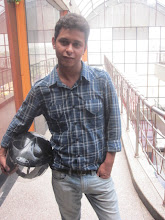F1 CAN NOW GO GAGA OVER MUSIC
NOIDA: The inaugural Formula One race in the country promises to exhilarate even those who aren't fans of motor sports as pop diva Lady Gaga is all set to make her India debut on October 30 when she will be performing at the closing ceremony of the 2011 Formula 1 Airtel Indian Grand Prix. The multi-award winning American heavy metal band Metallica had already announced that they will perform in India during the inaugural F1 event as a part of F1 Rocks, the series of global live music events staged alongside F1 races across the world.
Bollywood actor, Arjun Rampal's disco-bar Lap will be holding a series of after parties for the event for three days after the F1 weekend. "It's a very big thing that Lady Gaga has agreed to perform in India. She's at the peak of her career now and I am thrilled to announce that she will come to India for the first time," he said.
Arjun Rampal confirmed that Lady Gaga will also perform at the circuit on its concluding day. "Even Lady Gaga is keen to perform here. Her managers said she will enthrall us with her unique props and songs. She has got a huge fan following," he added before admitting that he himself was a huge fan with the song Poker Face being his favourite.
Musical fans found all this a bit too much to digest in their excitement as many of them couldn't decide which concert to go for. "I have already booked my tickets for the Metallica concert, but now I wish I hadn't. Lady Gaga is an incredible performer and it's going to be a fantastic show. I wish I had enough money to go for both," said Kartikeya Ramanathan, a student of Delhi University.
Music fans said that the F1 was going to transform the music scene in the city. "Delhi has never been the hotspot for big international bands to perform. Bands like Aerosmith and Pink Floyd have come to India but not Delhi, the F1 is going to change all of that," said Kriti Gupta, a musician based out of Delhi.
Metallica will be headlining the inaugural F1 Rocks in India. The concert is going to be held on October 28 in Leisure Valley, Gurgaon. Metallica is the seventh-biggest selling act in American history and they have received 21 prestigious international awards, including nine Grammys. "At this stage in the game, there are very few places in the world that we have not dragged our gear and crew to, so that makes this show announcement extra special. For the first time ever, we will be visiting India and it's about time, wouldn't you say," said the band in a release.
NOIDA: The inaugural Formula One race in the country promises to exhilarate even those who aren't fans of motor sports as pop diva Lady Gaga is all set to make her India debut on October 30 when she will be performing at the closing ceremony of the 2011 Formula 1 Airtel Indian Grand Prix. The multi-award winning American heavy metal band Metallica had already announced that they will perform in India during the inaugural F1 event as a part of F1 Rocks, the series of global live music events staged alongside F1 races across the world.
Bollywood actor, Arjun Rampal's disco-bar Lap will be holding a series of after parties for the event for three days after the F1 weekend. "It's a very big thing that Lady Gaga has agreed to perform in India. She's at the peak of her career now and I am thrilled to announce that she will come to India for the first time," he said.
Arjun Rampal confirmed that Lady Gaga will also perform at the circuit on its concluding day. "Even Lady Gaga is keen to perform here. Her managers said she will enthrall us with her unique props and songs. She has got a huge fan following," he added before admitting that he himself was a huge fan with the song Poker Face being his favourite.
Musical fans found all this a bit too much to digest in their excitement as many of them couldn't decide which concert to go for. "I have already booked my tickets for the Metallica concert, but now I wish I hadn't. Lady Gaga is an incredible performer and it's going to be a fantastic show. I wish I had enough money to go for both," said Kartikeya Ramanathan, a student of Delhi University.
Music fans said that the F1 was going to transform the music scene in the city. "Delhi has never been the hotspot for big international bands to perform. Bands like Aerosmith and Pink Floyd have come to India but not Delhi, the F1 is going to change all of that," said Kriti Gupta, a musician based out of Delhi.
Metallica will be headlining the inaugural F1 Rocks in India. The concert is going to be held on October 28 in Leisure Valley, Gurgaon. Metallica is the seventh-biggest selling act in American history and they have received 21 prestigious international awards, including nine Grammys. "At this stage in the game, there are very few places in the world that we have not dragged our gear and crew to, so that makes this show announcement extra special. For the first time ever, we will be visiting India and it's about time, wouldn't you say," said the band in a release.





















